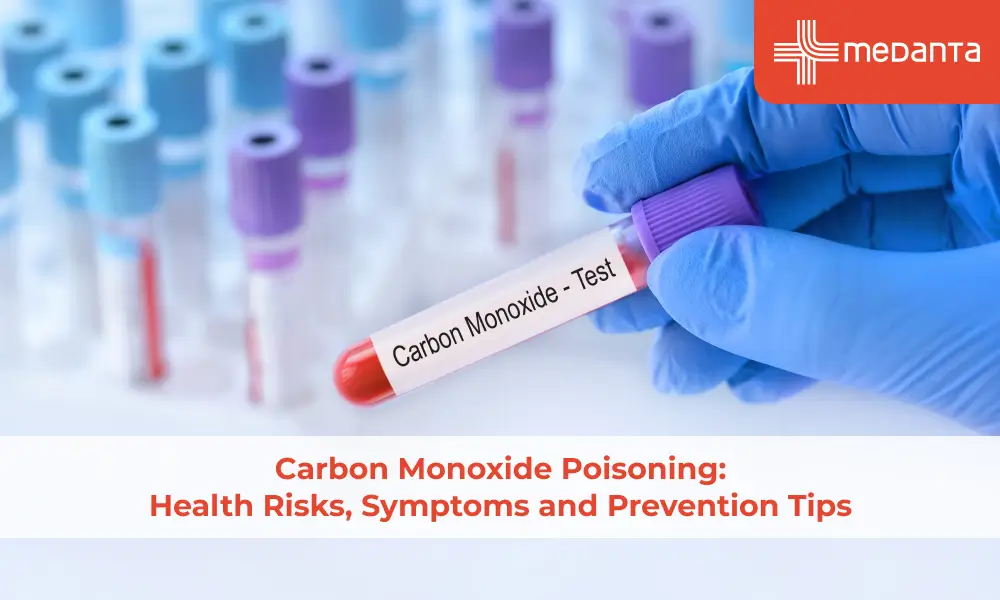Know your Liver and Take Care of it

TABLE OF CONTENTS
- What are the signs and symptoms of liver problems?
- What is a fatty liver and what causes it?
- What is liver cirrhosis and what causes it?
- What are the effects of cirrhosis on the body?
- How long and how much alcohol can cause cirrhosis of the liver?
- What is Hepatitis C and how does it spread?
- What is Hepatitis B and can it be prevented?
- How is NAFLD treated?
- What are the chances of developing a liver cancer in cirrhotic patients?
- What is a liver transplant?
- How will I know whether I need a liver transplant?
- What are the curative options for treatment of liver cancer (HCC)?
- How Can Liver Failure Be Prevented?
The liver is the largest organ in our body. In addition to its function to digest food and store a form of sugar that the body uses for energy, it plays a very important role in fighting infection and cleansing the blood of metabolic toxins. The liver is the only organ in the body that can regenerate itself when it is healthy. A person develops liver failure only when around three-quarters of liver cells (hepatocytes) are damaged.
The following are a few of the frequently asked queries on liver disease and their management.
What are the signs and symptoms of liver problems?
Some signs and symptoms of liver problems are yellowing of the skin and the whites of the eyes, a condition called jaundice*, feeling tired or weak, losing your appetite, feeling sick to your stomach, losing weight, losing muscle, itching, bruising or bleeding easily, bleeding in the stomach, throwing up blood, passing black stools, having a swollen abdomen, becoming forgetful or confused.
What is a fatty liver and what causes it?
Fatty liver, or steatosis, is a broad term that describes the buildup of fats in the liver. Having some fat in your liver is normal, but if more than 5-10 percent is fat, then it is called fatty liver disease. Fatty liver develops when the body ingests and/or creates too much fat and cannot metabolize it fast enough. As a result, the leftover is stored in liver cells where it accumulates to become fatty liver disease.
Fatty liver is usually a reversible condition and can go away if the inciting cause is corrected. Fatty liver often has no symptoms and may not cause any permanent damage unless the cause continues unabated. Risk factors for developing a fatty liver include alcoholism, high blood cholesterol, obesity, diabetes, pregnancy, inherited metabolic disorders
What is liver cirrhosis and what causes it?
Cirrhosis is a long-term disease of the liver in which a fiber-like tissue covers the organ and prevents toxins and poisonous substances from being removed. The liver passes through the following stages of liver damage before cirrhosis occurs: fatty liver, liver fibrosis (in which scar tissue forms in the liver), and then cirrhosis (wherein growth of connective tissue destroys liver cells).
Some causes of cirrhosis are long-term infection with the hepatitis C or hepatitis B virus, alcohol abuse, the buildup of fat in the liver and inflammation in the liver (also called non alcoholic fatty liver disease or NAFLD, and nonalcoholic steatohepatitis (NASH), respectively), hereditary liver diseases like biliary atresia, autoimmune hepatitis (which is destruction of liver cells by the body’s immune system). Rarer causes include hemochromatosis, primary biliary cirrhosis, primary sclerosing cholangitis, Wilson's disease and protoporphyria. Sometimes the cause of cirrhosis remains unknown even after a thorough investigation (these patients are said to have cryptogenic cirrhosis).
What are the effects of cirrhosis on the body?
Functions of the liver like controlling infections, removing bacteria and toxins from the blood, processing nutrients, hormones, and drugs, making proteins that regulate blood clotting, producing bile to help absorb fats (including cholesterol) and fat-soluble vitamins are all affected in cirrhotics. Scar tissue also blocks the normal flow of blood through the liver. Too much scar tissue means that your liver cannot work properly. With end-stage cirrhosis, the liver can no longer effectively replace damaged cells.
You may have no symptoms at all in the early stages. However, as cirrhosis progresses you may feel tired or weak , lose your appetite, lose weight, jaundice. In the early stages, cirrhosis causes your liver to swell. Then, as more scar tissue replaces normal tissue, the liver shrinks.
How long and how much alcohol can cause cirrhosis of the liver?
Alcoholic liver disease occurs after years of heavy drinking (more than 10 units per week, each unit being equal to 30ml of whisky/a glass of wine/beer or equivalent). It initially causes fat deposits in the liver. If the damage continues, it causes inflammation in the liver. Over time, scarring and cirrhosis can occur. Cirrhosis is the final phase of alcoholic liver disease.
Alcoholic liver disease does not occur in all heavy drinkers. On the other hand, you do not have to get drunk for the disease to happen. The chances of getting liver disease go up the longer you have been drinking and more alcohol you consume. Whether and with what amount of alcohol a person will develop serious liver damage also depends on individual metabolic capacity and the genetic make-up. The disease seems to be more common in some families. Women may be more likely to have this problem than men
What is Hepatitis C and how does it spread?
Hepatitis C is a liver disease caused by the Hepatitis C virus (HCV). Acute HCV occurs within six months after exposure and approximately 25% of people wit acute HCV fully recover during this time. About 75% go on to develop long-term or chronic HCV. Unless successfully treated with medications, chronic HCV can lead to cirrhosis (scarring) of the liver cancer and liver failure.
Anyone whose blood comes in direct contact with HCV-infected blood is at risk. It may also occur if the person has received blood transfusion or blood products, has been on hemodialysis, has come in contact with infected needles or syringes (especially injectable drug abusers), born to a HCV infected mother, has had unprotected sex with multiple partners, had tattoos or body piercings.
What is Hepatitis B and can it be prevented?
Hepatitis B is a liver disease caused by the Hepatitis B virus (HBV). It is transmitted from one person to another through body fluids such as semen, blood, vaginal secretions etc.
Vaccination is the best way to prevent Hepatitis B, because it gives long term immunity. Three doses are given over a 6 month period. The first two doses are given in the first and second months and the third dose is given in the sixth month.
How is NAFLD treated?
The most important recommendations for people with fatty liver are to lose weight if they are overweight or obese, increase their physical activity, follow a balanced diet, avoid alcohol and unnecessary medications. In patients with NASH, these same recommendations may be helpful. It is important to control diabetes and treat elevated cholesterol levels when appropriate.
What are the chances of developing a liver cancer in cirrhotic patients?
More than 90% of primary liver cancers (hepatocellular carcinoma or HCC) develop in a diseased/cirrhotic liver. Hence, once a patients is detected to have cirrhosis, he is asked to be under regular surveillance for the development of HCC by having a periodic USG of the abdomen, some blood tests including tumour markers like AFP.
What is a liver transplant?
Liver transplantation is surgery to remove a diseased or injured liver and replace it with a healthy one from another person, called a donor.
A liver transplant may be recommended for people who have end-stage liver disease (ESLD), a serious, life-threatening liver dysfunction, when the end-stage liver failure can't be controlled using other treatments; and for some people with liver cancer. Liver failure can occur rapidly, in a matter of weeks (acute liver failure), or it can occur slowly over months and years (chronic liver failure). Most liver transplants are performed for chronic liver diseases that lead to irreversible scarring of the liver, or cirrhosis of the liver.
How will I know whether I need a liver transplant?
Your doctor will decide whether you need to go for a liver transplant. When your doctor recommends a liver transplant, it usually means that other treatments for liver disease aren’t enough. For liver failure that is the result of long-term deterioration, the initial treatment goal may be to save whatever part of the liver is still functioning. If this is not possible, then a liver transplant is required. Fortunately, liver transplant is a common procedure that is often successful. The transplant team will examine you and run blood tests, x rays, and other tests to help decide whether you would benefit from a transplant.
What are the curative options for treatment of liver cancer (HCC)?
Other than very small tumours (upto 2.5-3.0 cm in size) which can be sometimes managed with radiofrequency ablation (RFA), the only other options for patients with HCC is surgery. The two curative forms of surgery in these patients are liver resection (in which a part of the affected liver (with the tumour) is removed, and the other is liver transplantation. The main drawback of resection is tumour recurrence which occurs in up to 70% of resected cirrhotic patients. Liver Transplant seems to be the most oncologically curative treatment in patients with HCC only restricted to the liver and not invading the major blood vessels of the liver.
How Can Liver Failure Be Prevented?
The best way to prevent liver failure is to limit your risk of developing cirrhosis or hepatitis. Here are some tips to help prevent these conditions:
• Get a hepatitis vaccine to prevent hepatitis A or B.
• Eat a proper diet from all of the food groups.
• Drink alcohol in moderation.
• Practice proper hygiene. Since germs are commonly spread by hands, be sure to wash your hands thoroughly after you use the bathroom. Also, wash your hands before you touch any food.
• Don't handle any blood or blood products.
• Don't share any personal toiletry items, including toothbrushes and razors.
• If you get a tattoo or a body piercing, make sure the conditions are sanitary and all equipment is aseptic (free of disease-causing microorganisms).
• Be sure to use protection (condoms) when having sex.
• If you use illegal intravenous drugs, don't share needles with anyone.






